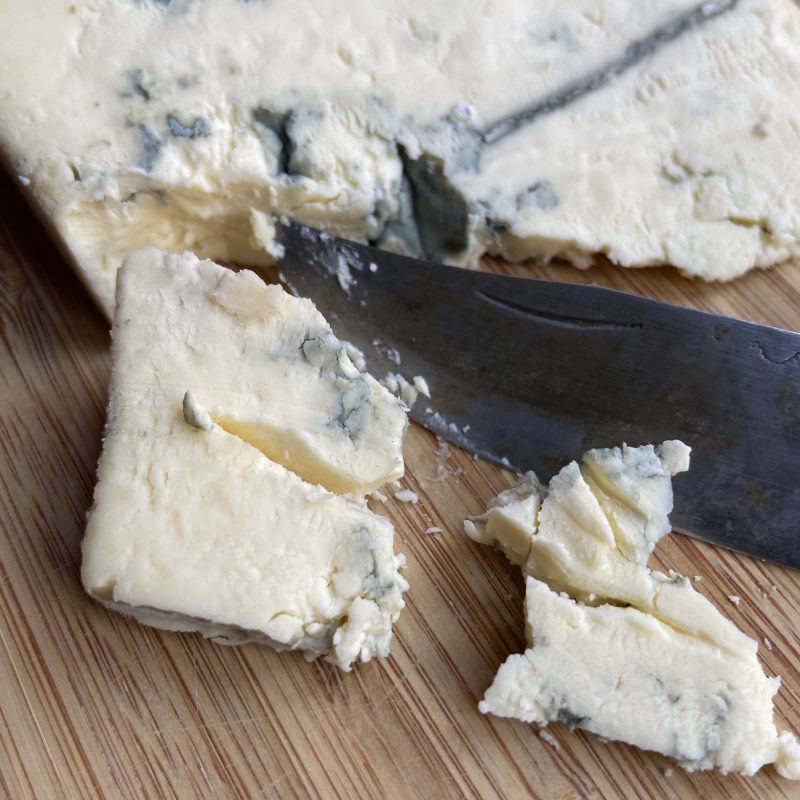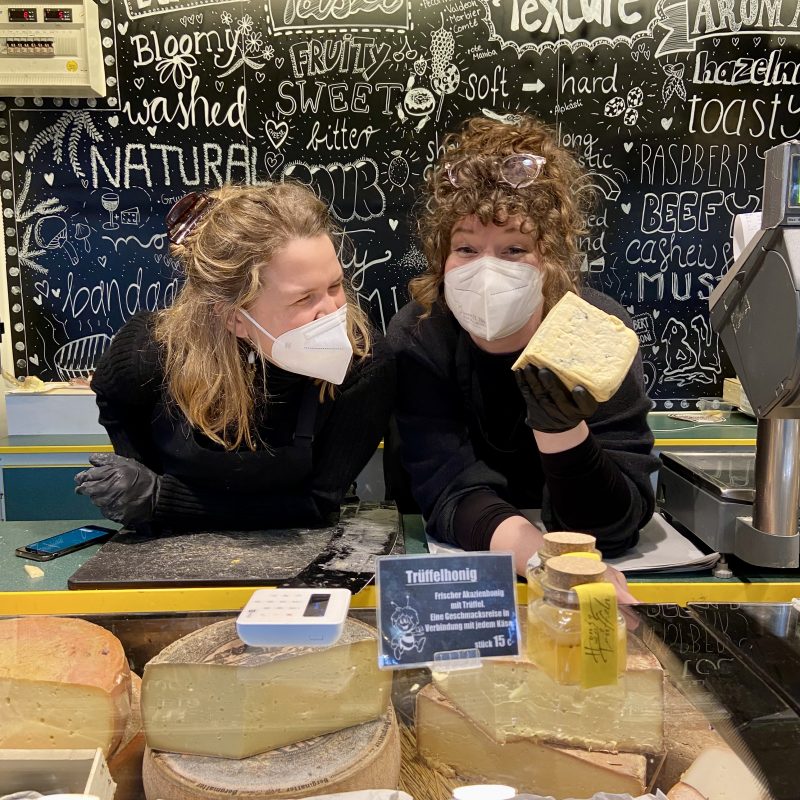This a monthly series which I have been publishing for quite some years. You can subscribe here, to get the latest cheese delivered directly on to your screen.
Which country is top of the list for cheese producers by volume worldwide? Not Switzerland, not France and not Italy either, but the USA. Makes sense, seen its size. However, who is number two and ranks as number one for cheese exports worldwide? Germany! Which makes it utterly frustrating how difficult it is to find good German cheese abroad. One reliable exception is Cambozola, a real feat of dairy technology from Bavarian Allgäu, that manages to coax blue penicillium cultures to flourish in opulent creaminess covered with a bloomy white rind, thereby combining Camembert’s mild acidity with the sweet savouriness of Gorgonzola dolce. Reliable, and yes, yummy – but not overly exciting, and by no means artisanal.
Fortunately things have changed for the better during the last years, at least in the top cheese counters (a development driven to a large extent by the Kaeskuche team – but that’s a different story). Interestingly enough the best known and arguably most successful is once again a blue cheese from the Allgäu. Chiriboga Blue is made from raw cow’s milk, more buttery than creamy, dense and sweet, with a gorgeous, lively acidity. Its shape and size mimic Roquefort – but it’s soooo different. There’s just one drawback: in Germany, until quite recently, it was nowhere to be found, as demand in the US alone gobbled up most of its entire production. But due to the global political upheavals of the last months on one hand and the building of a new cheesemaking facility on the other, we’re finally able – hooray! – to partake in its deliciousness, utterly spoonable, similar to rich ice cream, and yet the opposite of junky boredom.

What remains unchanged is the man behind the cheese and the way he’s been hand making it since 2004 (!) following his very own recipe, twice a week. I first wrote about Arturo Chiriboga, the friendly, good-humoured Ecuadorian who ended up in Bad Hindelang after studying in Switzerland, exactly six years ago. Since 2018 he and his blue cheese have found a new homestead at Hofkäserei Albert Kraus in Eberbach.

What makes Chiriboga Blue so exceptional? Besides the super good milk (from Albert’s brother’s Brown Swiss cows next door) two things. First Arturo cuts the curd by hand („I have to feel it“ he says), three times, letting it sink in between, which reminds me a bit of bâtonnage in winemaking, the stirring up of lees, and surely makes for the cheese’s special acidity structure. Second he doesn’t add the penicillium cultures to the milk. Instead he dips the needles in those cultures when he pierces the young cheeses after two days (the mould needs oxygen to grow). I have never heard about this method for any other cheese.
Depending on the season and humidity bluish green veins are then growing inside and patches outside, and after five to seven weeks Chiriboga Blue is ready for your cheese board – that is, if you don’t devour it straight away! For those of you living in Berlin: Carina and Eli are selling it at the Bert und Boni stall at Markthalle Neun, otherwise you can order it here and here. It will make you smile and do away with the blues – promise. Cheerio!

If you enjoyed reading this, you might consider clicking on the button below and supporting me in my work. I’d be more than happy and very grateful. Thank you.

